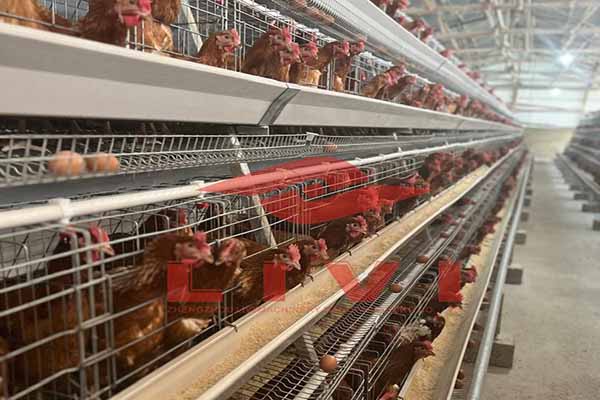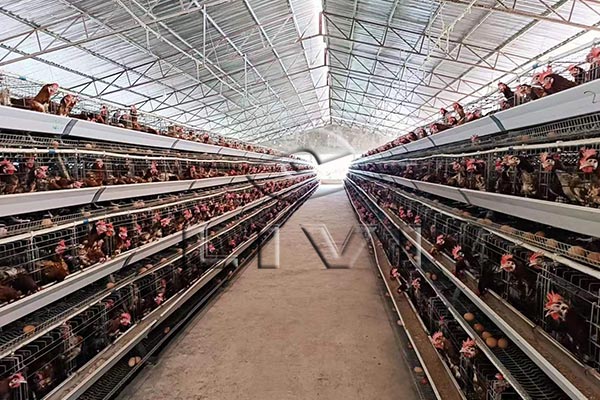Modern Poultry Farming in Nigeria
As the poultry industry in Nigeria continues to grow, commercial farmers are looking for more efficient ways to house larger flocks. H-Type battery cages are now the go-to solution for farmers operating at the 20,000-layer scale. These systems are engineered for efficiency, automation, and longevity, making them ideal for large-scale egg production operations in Nigeria’s diverse farming environments.

Features and Benefits of H-Type Poultry Cages in Nigeria
-
Space Optimization: The vertical, multi-tier design allows you to raise 20,000 chickens in a smaller footprint, reducing land and construction costs.
-
Fully Automated Feeding and Water Systems: Ensures consistent delivery of nutrition while saving labor.
-
Centralized Egg Collection System: Minimizes egg breakage and manual labor with conveyor automation.
-
Manure Belt Removal System: Improves hygiene, reduces odor, and enhances disease prevention.
-
Hot-Dip Galvanized Steel Structure: Provides long-term rust protection, suitable for humid Nigerian climates.
-
Adaptable Ventilation Setup: Ensures air quality and temperature control, crucial in tropical environments.
Technical Overview 20,000-Layer Cage System in Nigeria
-
Cage Type: H-Type, 4-5 tiers
-
Capacity per Cage Set: 160-240 birds
-
Required Sets: Approximately 100-130 sets
-
House Size: 75m x 12m x 4m
-
Automation: Feeding, watering, egg collection, manure removal

Investment Cost of H-Type Layer Cage System in Nigeria
Pricing varies depending on the level of automation and customization. Here’s a general range for a 20,000-bird capacity:
-
Basic H-Type System: $30,000 – $50,000
-
Fully Automated System: $60,000 – $90,000
Reliable Return on Investment (ROI)
Based on field experience and current egg market data in Nigeria, the income from 20,000 layers can be estimated as follows:
-
Daily Egg Output: 19,600 eggs (at 98% laying rate)
-
Local Egg Price: $0.10 per egg (average retail)
-
Daily Income: $1,960
-
Monthly Income: ~$58,800
-
Monthly Operating Costs: ~$25,000 (including feed, labor, utilities)
-
Monthly Profit: ~$26,000
With this model, the average farm using H-Type poultry cages can expect to recover the initial investment within 6–10 months under stable market conditions. Even with conservative margins or market fluctuations, the payback period rarely exceeds 18–24 months.
5 Reasons Nigerian Farmers Choose H-Type Cages
-
Increased Egg Yield – Better living conditions result in consistent laying performance.
-
Reduced Labor Dependence – Automation significantly cuts daily labor requirements.
-
Higher Biosecurity – System design limits disease spread, crucial in high-density environments.
-
Long-Term Profitability – Lower maintenance and high productivity offer fast ROI.
-
Government & NGO Support – Often eligible for agricultural investment programs.
Make the Smart Investment Today
If you’re ready to upgrade your poultry farm to a 20,000-bird capacity, our H-Type poultry cage systems are the perfect solution. With years of experience in custom poultry equipment and export services to Nigeria, we help you plan, design, and install your system with confidence.
Contact us today or leave a message below. Our poultry consultants will provide you with a tailored solution and competitive pricing designed to help your poultry business thrive in Nigeria.



